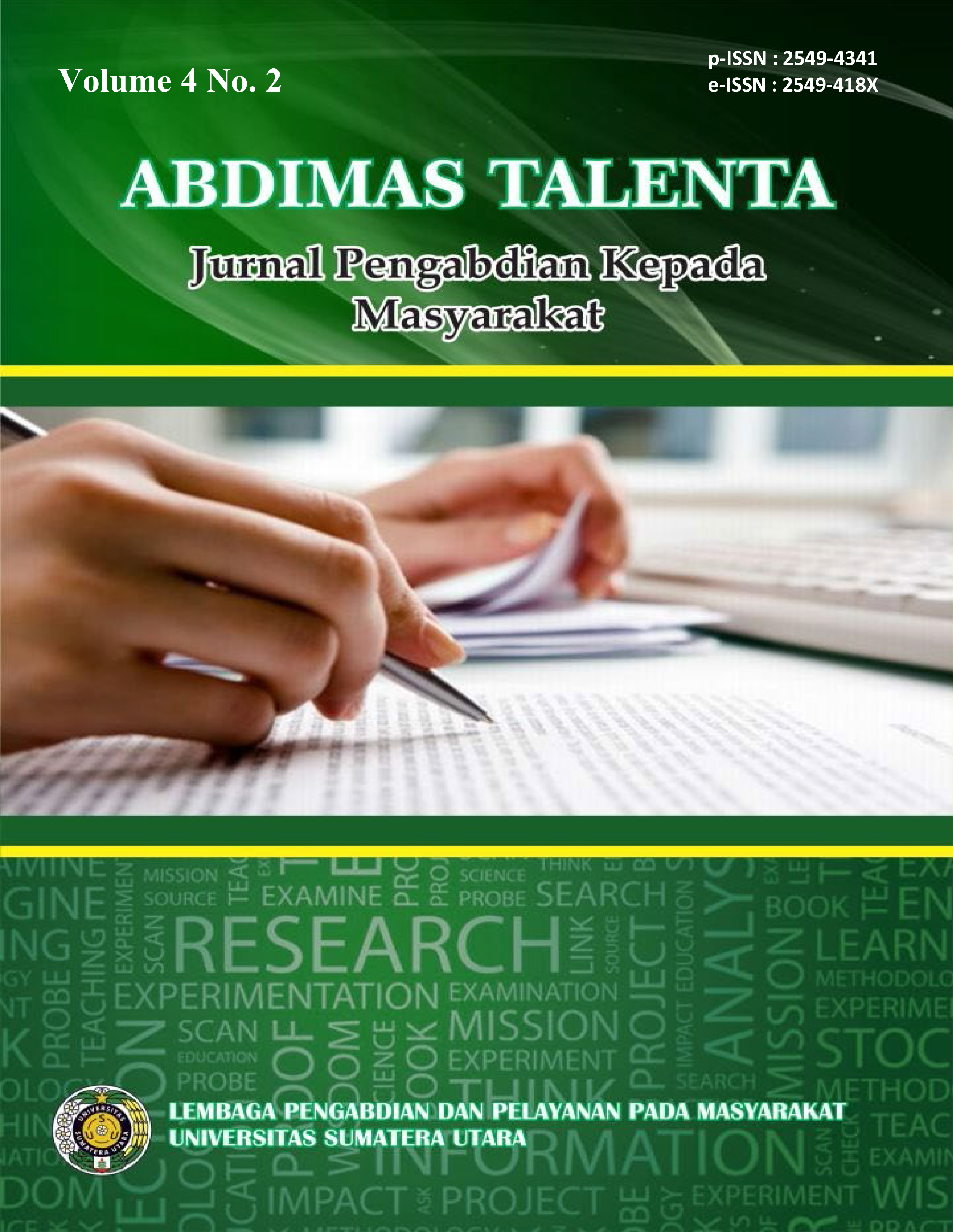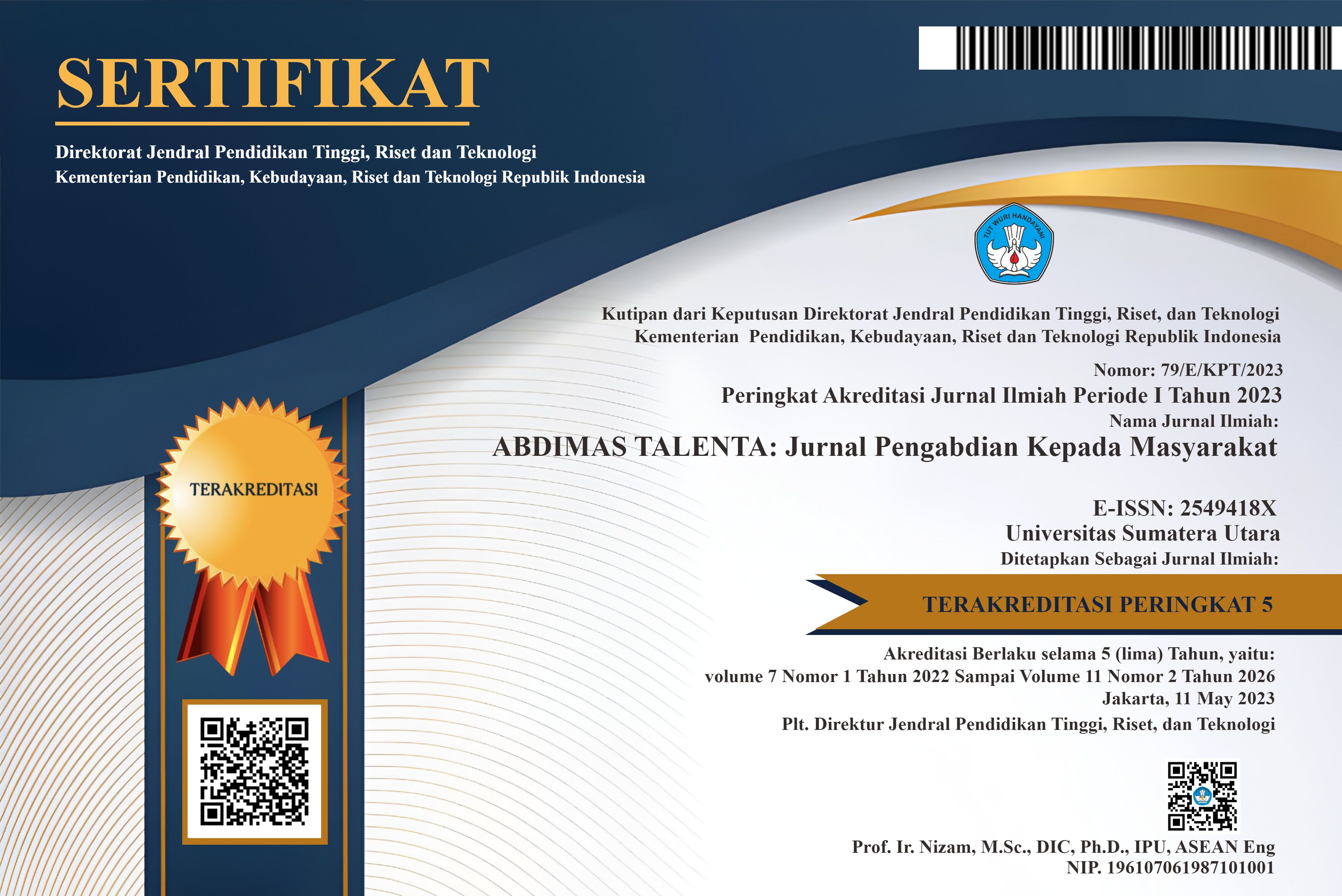Association between allergic rhinitis, eosinophilia and helminth infection in Alwasliyah Berastagi elementary school students
DOI:
https://doi.org/10.32734/abdimastalenta.v4i2.4109Keywords:
Eosinophilia, allergic rhinitis, helminth infectionAbstract
Introduction Eosinophils can regulate local immune and inflammatory responses, and their accumulation inside blood and tissue has long been associated with parasitic infestation and allergic inflammation. The prevalence of allergic rhinitis and helminth infection in children relatively increases every year. The burden of allergic rhinitis and helminth infection is mainly attributed to the quality of life of those infected. The latest study shows that an increase in eosinophil progenitors is important in diseases associated with eosinophilia. Objective: The community service was established to find the distribution of allergic rhinitis, eosinophilia, and helminth infection among students in Alwasliyah Berastagi Elementary School and to determine the association between allergic rhinitis and eosinophilia in helminth infection. In addition, this service is also aimed at increasing student’s knowledge about the association between allergic rhinitis and eosinophilia in helminth infection and how to prevent it. Method: We did the ENT examination, routine blood test, and routine stool examination to 43 students and gave the students education about the association between allergic rhinitis and eosinophilia in helminth infection and how to prevent it. Result: The prevalence of allergic rhinitis, eosinophilia, and helminth infection was 53.5%, 19.5%, and 13%. The highest prevalence of allergic rhinitis is among 11 years old age group and female students (52.5%, 60.9%). The highest prevalence of eosinophilia is among 11 and 12 years old age group both accounting 37.5%. The highest prevalence of helminth infection is in 10 and 12 years old age group (66.7%, 33.3%). Both eosinophilia and helminth infection are higher among male than female students (62.5% and 66.7%). There were more students with a corrected answer that we classify as good knowledge after they were educated than before they were educated. (93% vs 79.1%) Conclusion: There was no significant association between allergic rhinitis, helminth infection, and eosinophilia (p = 0.587 and p = 0.458, p >0.05).
Downloads
Downloads
Published
Issue
Section
License
Copyright (c) 2019 ABDIMAS TALENTA: Jurnal Pengabdian Kepada Masyarakat

This work is licensed under a Creative Commons Attribution-ShareAlike 4.0 International License.
The Authors submitting a manuscript do so on the understanding that if accepted for publication, copyright of the article shall be assigned to Jurnal Abdimas TALENTA as well as TALENTA Publisher Universitas Sumatera Utara as the publisher of the journal.
Copyright encompasses exclusive rights to reproduce and deliver the article in all forms and media. The reproduction of any part of this journal, its storage in databases and its transmission by any form or media, will be allowed only with written permission from Jurnal Abdimas TALENTA.
The Copyright Transfer Form can be downloaded here.
The copyright form should be signed originally and sent to the Editorial Office in the form of original mail or scanned document.












